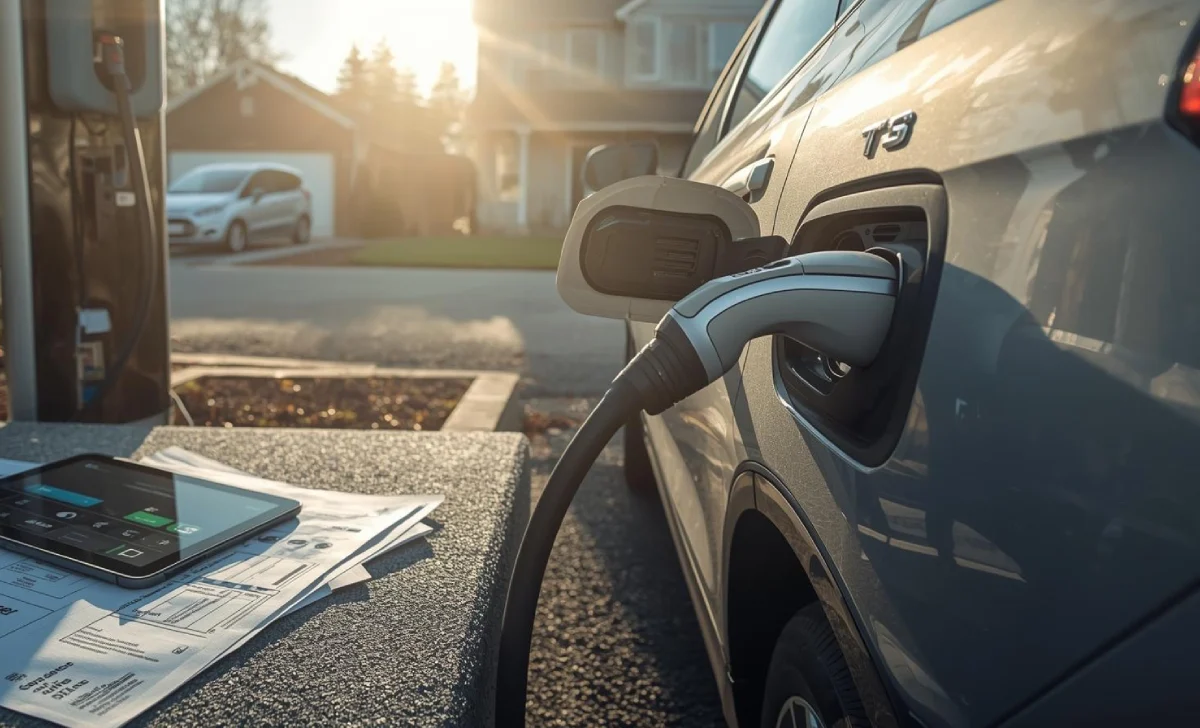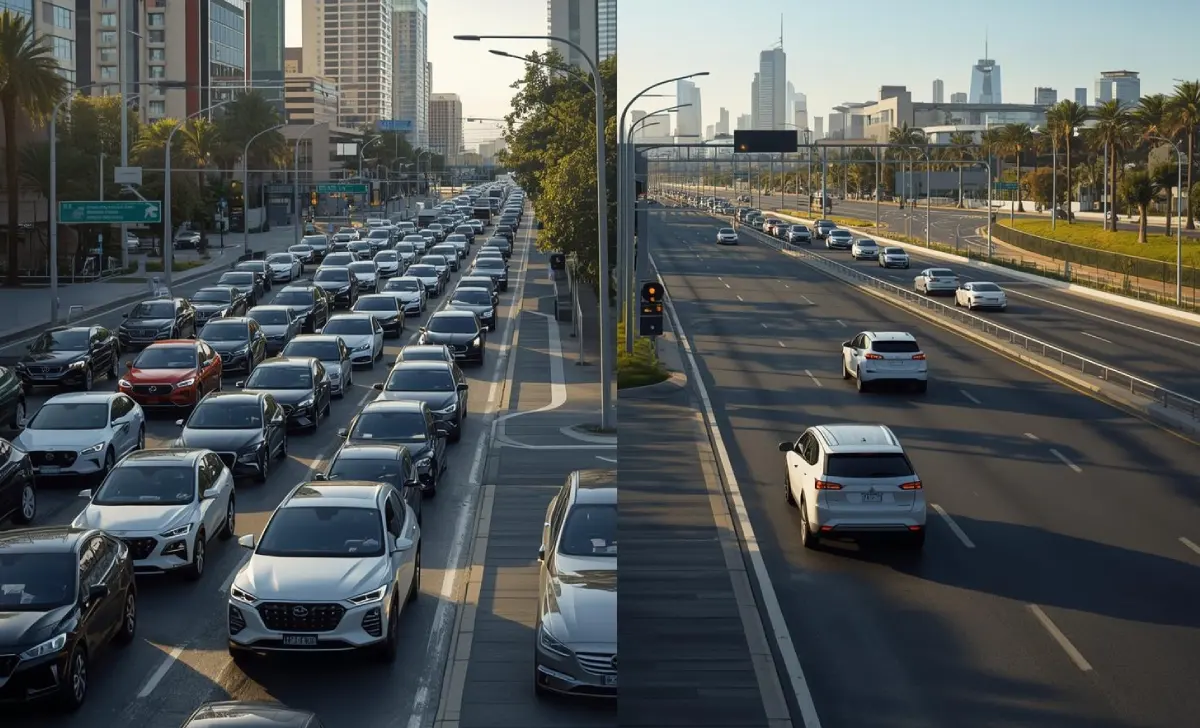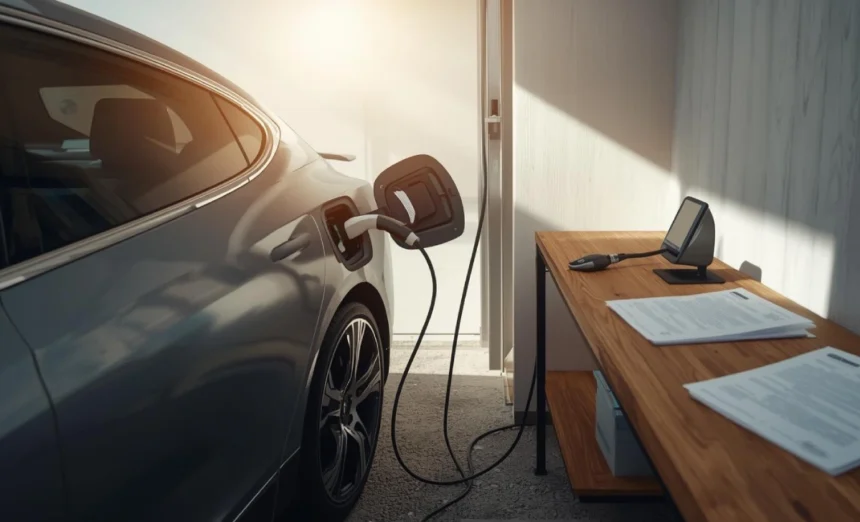Australia’s electric vehicle revolution is gaining momentum, but many drivers are discovering that insuring their new EV comes with unique challenges and higher costs. Recent research shows premiums for some popular models can exceed $3,000 annually, leaving many wondering what makes electric car insurance so different.
- What is electric car insurance in Australia?
- How much does electric car insurance cost in Australia?
- Factors influencing EV and hybrid insurance premiums
- Discounts, incentives and government support
- Special rules and policy inclusions for electric cars
- Sydney vs Perth: why location drives cost differences
- Tips for reducing electric car insurance premiums
- FAQs
- 1. Why is electric car insurance more expensive than petrol car insurance in Australia?
- 2. Does car insurance in Australia cover EV battery replacement?
- 3. Are home charging stations included in electric car insurance policies?
- 4. Which Australian states offer incentives that reduce EV ownership costs?
- 5. How can I reduce my electric car insurance premiums?
- Conclusion
This guide cuts through the complexity to show you exactly what electric car insurance in Australia costs, where to find discounts, and which special rules apply to EV and hybrid coverage. You’ll discover practical ways to reduce your premiums and understand why location matters more than you might think.
What is electric car insurance in Australia?
Electric car insurance in Australia covers the same basic risks as traditional vehicle insurance, but with important additions tailored to EV technology. Standard comprehensive policies protect against theft, accidents, and storm damage, while EV-specific coverage extends to expensive battery systems and specialised charging equipment.
The key difference lies in how insurers handle battery coverage and repairs. Most policies cover accidental battery damage but exclude natural degradation over time. This matters because EV batteries can cost $15,000 to $30,000 to replace, making them a significant risk factor for insurers.
Australian insurers like NRMA, RAC, and Budget Direct have developed specific EV products that address unique concerns. These include coverage for home charging stations, specialised towing requirements (EVs need flatbed trucks to prevent damage), and access to qualified EV repair networks across major cities.

How much does electric car insurance cost in Australia?
Electric vehicle insurance premiums in Australia can reach over $3,000 for popular models, significantly higher than equivalent petrol vehicles. The average annual premium varies dramatically by vehicle type, location, and driver profile.
Here’s what you can expect to pay across Australia’s major cities:
Sydney EV Insurance Costs:
- Tesla Model 3: $2,800 – $3,500 annually
- BYD Atto 3: $2,200 – $2,800 annually
- Hyundai Ioniq 5: $2,400 – $3,100 annually
Perth EV Insurance Costs:
- Tesla Model 3: $2,200 – $2,900 annually
- BYD Atto 3: $1,800 – $2,400 annually
- Hyundai Ioniq 5: $2,000 – $2,600 annually
Perth drivers typically pay 15-20% less than Sydney residents due to lower population density, reduced theft rates, and fewer accidents. However, Perth’s limited network of EV-certified repair shops can increase costs when claims do occur.
The premium difference between EVs and petrol cars ranges from 20-40% higher for electric vehicles, driven primarily by higher vehicle values and specialised repair requirements.
Factors influencing EV and hybrid insurance premiums
Several unique factors drive up electric car insurance costs beyond traditional risk assessments. Vehicle value plays the biggest role, as EVs typically cost $10,000-$20,000 more than comparable petrol models.
Key cost drivers include:
- Battery replacement costs: Single batteries cost $15,000-$30,000 to replace
- Specialist repair networks: Limited certified EV technicians increase labour costs
- Higher theft risk: EVs are attractive targets due to their advanced technology
- Charging equipment: Home charging stations require additional coverage
Driver factors remain consistent with traditional insurance. Your age, driving history, and no-claim bonus status significantly impact premiums. A 25-year-old with a clean record might pay 30% less than a 19-year-old driver for the same Tesla Model 3.
Location-specific risks also matter more for EVs. Sydney’s frequent hailstorms pose greater risks to expensive EV panels and charging ports, while Perth’s extreme heat can affect battery performance and potentially increase claims frequency.
Optional extras like covering portable charging equipment or roadside battery assistance can add $200-$500 annually to your premium but provide valuable peace of mind for new EV owners.
Discounts, incentives and government support
While EV insurance costs more, several discount opportunities can help offset higher premiums. Many Australian insurers now offer specific eco-friendly vehicle discounts recognising the environmental benefits of electric driving.
Insurer discounts available:
- NRMA: Up to 15% discount for certified green vehicles
- RAC WA: Multi-policy discounts when bundling home and EV insurance
- Budget Direct: Low-kilometre discounts (common for urban EV drivers)
- Youi: Safe driver bonuses enhanced for EV owners with telematics data
Australian EV buyers can access fringe benefits tax exemptions for EVs under the luxury car tax threshold, which indirectly reduces total ownership costs. The luxury car tax threshold is higher for EVs at $89,332 compared to $76,950 for petrol vehicles.
State-based incentives vary significantly:
Current government support (2024-2025):
- Victoria: $100 annual registration discount for EV owners
- South Australia: Registration fee exemption worth $152 for 12-month periods
- Queensland: 1% stamp duty discount and registration cost reductions
While most direct purchase rebates ended in early 2024, these ongoing registration savings help offset insurance cost differences over time.
Special rules and policy inclusions for electric cars
Electric vehicle insurance policies contain several unique provisions that traditional car insurance doesn’t address. Understanding these special rules prevents nasty surprises when making claims.
Battery coverage specifics:
- Accidental damage: Fully covered under comprehensive policies
- Gradual degradation: Excluded from all policies (considered normal wear)
- Fire or flood damage: Covered, but replacement may trigger total loss assessments
- Theft of battery components: Covered under comprehensive policies
- Towing requirements differ significantly from petrol vehicles. EVs must be transported on flatbed trucks to prevent damage to electric motors and battery systems. This requirement increases towing costs but is standard across all major Australian insurers.
- Charging equipment coverage varies between insurers. Some automatically include home charging stations up to $5,000, while others require additional coverage. Public charging station incidents (like electrical faults damaging your vehicle) are typically covered under comprehensive policies.
- Write-off procedures for EVs involve special battery disposal considerations. Insurance and registration costs are generally similar to petrol vehicles, but salvage values can be lower due to battery disposal requirements under Australian environmental regulations.
Most insurers also provide emergency charging services, recognising that running out of battery power poses different challenges than running out of petrol.
Sydney vs Perth: why location drives cost differences
Location significantly impacts electric car insurance costs, with Sydney drivers paying substantially more than their Perth counterparts. The difference stems from several measurable risk factors that insurers price into their premiums.
Sydney’s higher costs reflect:
- Population density: 5.3 million people increases accident likelihood
- Extreme weather: Frequent hailstorms damage expensive EV components
- Theft rates: Higher crime rates in metropolitan areas
- Repair costs: More expensive labour and premises costs
Perth benefits from:
- Lower density: 2.1 million people spread across larger area
- Stable weather: Less extreme weather events threatening vehicles
- Reduced congestion: Lower accident rates on major routes
- Competition: Fewer insurers but more competitive pricing
Sample premium comparison for Tesla Model 3:
| Location | Annual Premium Range | Average Saving vs Sydney |
|---|---|---|
| Sydney CBD | $3,200 – $3,800 | Baseline |
| Sydney Suburbs | $2,800 – $3,400 | 12% less |
| Perth CBD | $2,600 – $3,200 | 19% less |
| Perth Suburbs | $2,200 – $2,800 | 28% less |
Regional areas outside major cities often see even lower premiums but face challenges with limited EV repair networks, potentially increasing claim settlement times.

Tips for reducing electric car insurance premiums
Smart EV owners can significantly reduce their insurance costs through strategic choices and policy optimisation. These practical steps help offset the premium increases that come with electric vehicle ownership.
Immediate cost-reduction strategies:
- Increase your excess: Raising excess from $600 to $1,200 can save 15-20% annually
- Bundle policies: Combine home and car insurance for discounts up to 20%
- Install security: Garage parking and dashcams earn additional discounts
- Choose optimal coverage: Skip unnecessary add-ons like rental car coverage if you have alternatives
Annual review actions:
- Compare quotes from at least three insurers specialising in EV coverage
- Update your annual kilometre estimates (many EV drivers travel less than expected)
- Leverage no-claim bonuses aggressively
- Consider telematics-based policies that reward safe driving habits
Location considerations:
- Secure parking can reduce premiums by 10-15% in major cities
- Postcode shopping within reason (some suburbs offer significantly lower rates)
- Regional moves can cut premiums substantially but consider repair network access
Popular comparison sites like Compare the Market, Finder, and Canstar specifically track EV insurance options, making it easier to identify competitive quotes across multiple insurers simultaneously.
Remember that cheapest isn’t always best for EV insurance. Prioritise insurers with strong EV repair networks and clear battery coverage policies over those offering rock-bottom premiums with unclear terms.
FAQs
1. Why is electric car insurance more expensive than petrol car insurance in Australia?
EV insurance costs more because electric vehicles have higher purchase prices, expensive batteries ($15,000–$30,000 to replace), and limited specialist repair networks. These factors increase claim costs compared to petrol cars.
2. Does car insurance in Australia cover EV battery replacement?
Yes, most comprehensive policies cover accidental battery damage (e.g., collisions, fire, or flood). However, natural wear and gradual battery degradation are excluded, as they’re considered normal maintenance issues.
3. Are home charging stations included in electric car insurance policies?
Some insurers automatically cover home charging stations up to a set amount (often around $5,000). Others require you to add optional coverage. It’s best to confirm with your insurer.
4. Which Australian states offer incentives that reduce EV ownership costs?
State incentives vary. For example, Victoria provides a $100 annual registration discount, South Australia offers a full registration fee exemption, and Queensland provides stamp duty discounts. These don’t lower insurance premiums directly but help offset ownership costs.
5. How can I reduce my electric car insurance premiums?
You can lower costs by:
-
Increasing your excess
-
Bundling policies (home + car)
-
Installing security measures (garage parking, dashcams)
-
Comparing EV-specific insurers through sites like Finder or Canstar
-
Taking advantage of safe driver bonuses or telematics-based policies
Conclusion
Electric car insurance in Australia presents unique challenges and opportunities for savvy drivers. While premiums typically run 20-40% higher than petrol vehicles, understanding the specific factors driving these costs helps you make informed decisions and find meaningful savings.
The key lies in comparing insurers that truly understand EV technology, taking advantage of available government incentives, and optimising your policy structure. Whether you’re in Sydney dealing with higher urban costs or enjoying Perth’s more affordable rates, careful planning can keep your EV insurance manageable.
Ready to find the right coverage for your electric vehicle? Start by getting quotes from EV-specialist insurers and explore your state’s current incentive programmes to maximise your savings.
What’s been your experience with electric car insurance costs in Australia? Share your tips and experiences in the comments below.






